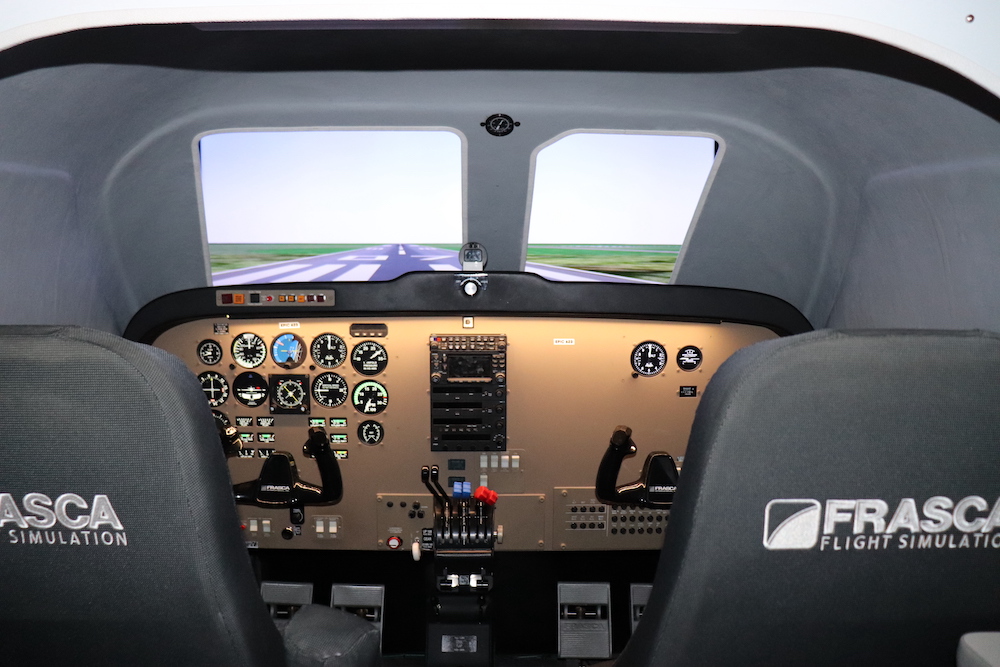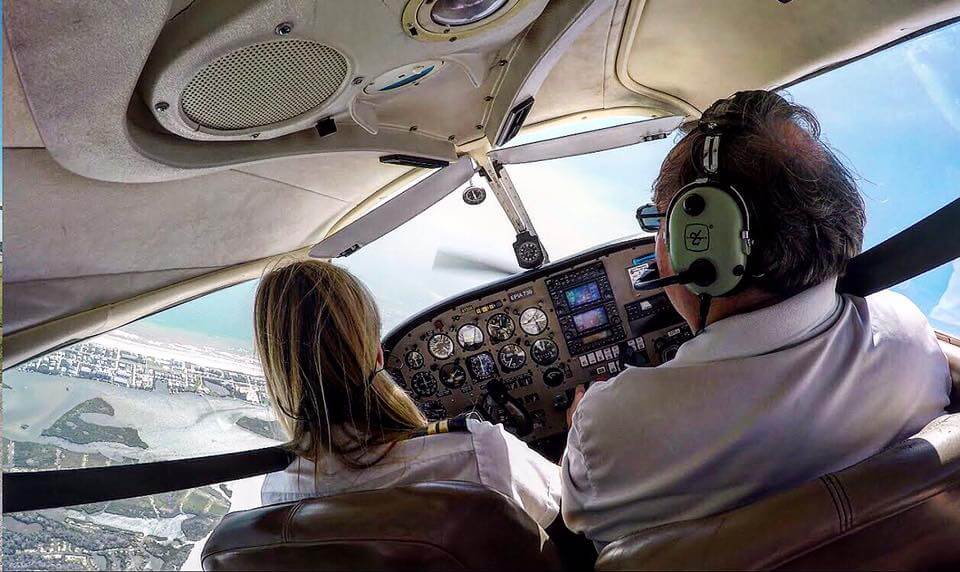Aviation safety is the most important topic in pilot training. In 2019, the Bureau of Transportation Statistics reported that 925.5 million passengers flew on U.S. flights. Globally, 4.5 billion passengers took to the skies in 2019. In terms of aircraft, the FAA handled more than 16 million flights in 2019, more than 44,000 each day. These statistics represent a lot of happy landings in an industry whose primary focus is safety.
Flight training is no different. Safety remains the number one priority for flight schools, and Epic Flight Academy is proud to be at the forefront with its “Safety First” policies, procedures, equipment, and maintenance. Pilots who train at Epic learn on Day One that the emphasis of all flight training is SAFETY.
What does Epic Flight Academy do to ensure safety?

First of all, we begin with our fleet of new aircraft built with proven safety systems. For example, the Cessna 172 Skyhawk is the world’s most popular training airplane, mainly because of its impressive safety record. Epic’s FAA-certified A&P technicians maintain our fleet of 172s. They keep everything in perfect working condition to ensure safety for student pilots, instructors, and other passengers. Training in the world’s safest airplane is our first step to ensuring safety.
What procedures are in place to reduce pilot error?
Our Certified Flight Instructors have achieved the highest level of training. Furthermore, they receive regular ongoing training as per FAA recertification regulations. They oversee every aspect of instruction. This includes ground school and in-flight training. In this way, our students develop the knowledge, skills, and attitudes necessary to ensure safe flying. From weather monitoring to pre-flight checklists to simulated emergency landings, it’s all covered. Our instructors put safety first in every decision, lesson, and action.
Can dangerous flight situations be practiced in a safe environment?

Yes. Our virtual flight academy includes state-of-the-art flight simulators so student pilots can practice every scenario while safely on the ground. Simulators allow pilots to practice for every worst-case scenario. We all remember “Sully” and his miraculous landing on the Hudson River. Such a landing would not have been possible had the pilot, Chesley Sullenberger, not trained in flight simulators.
How do Epic’s CFIs address safety?
Our student pilots often tell us that our instructors are tough, but with safety as the number one priority, they are expected to be. Anyone can fly a plane, but not everyone can handle an emergency situation. Our Certified Flight Instructors go above and beyond when preparing student pilots for every possible emergency scenario. This is what good pilot training is all about. We know you can take off, fly, and land safely on a fair weather day when there is no air traffic, but we want to be sure you can handle any challenge that comes your way. Our instructors are held to the highest standards, and so are our students. “Safety first” is much more than a motto.
Does safety training continue after a pilot is certified?
Yes. The FAA sets regulatory standards requiring all pilots to continue regular safety training even after they have achieved their pilot ratings. The AOPA (Aircraft Owners and Pilots Association), a non-profit aviation advocacy organization, also promotes safety. For example, the AOPA offers safety training support for student pilots, active pilots, career pilots, CFIs, and even lapsed pilots.
Aviate – Navigate – Communicate
First, all Certified Flight Instructors teach emergency procedure in the airplane. This means they simulate all types of emergency situations, and student pilots use their Emergency Checklist to follow the safest procedures. Furthermore, the three tasks that all pilots perform on every flight include: aviate (fly the plane), navigate (stay on course), and communicate (talk to the tower and other pilots). In an emergency situation, they actually do them in this order.
- Aviate – First and foremost, keep the plane flying. If that is not possible, prepare for an emergency landing following emergency procedures.
- Navigate – Next, as soon as you have the airplane under control, verify you are on the safest course for a safe landing. Be aware of airspace, other planes, electrical lines, etc. Also, notice objects on the ground if you are unable to land on a runway, such as tall buildings, highways, etc.
- Communicate – Lastly, as soon as safely possible, communicate your emergency to ATC. If your radio has failed, use your transponder. Pilots use 7700 for an actual emergency, 7600 for a communications failure.
Above all, the most important job you have as a pilot during an emergency is to AVIATE – fly the plane! That is your number one priority.
“Safety” and “flight training” are synonymous at Epic Flight Academy. We take pride in our safety record and remain vigilant in every aspect of training and maintenance so students can feel confident on every flight. As a result, our student pilots learn to fly in all situations. In other words, they are prepared for emergencies or challenges in their flying careers. Our motto is always SAFETY FIRST!

